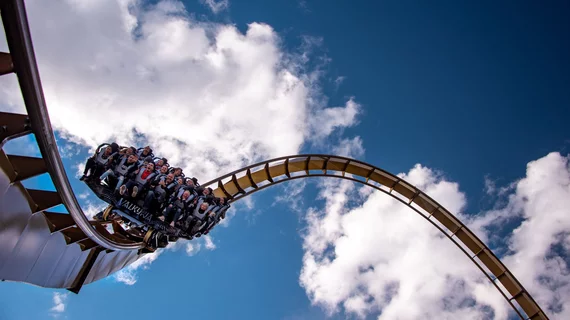Radiologist pay, productivity jostled by pandemic recovery, CMS coding changes
Diagnostic radiology saw its median compensation rise just 1.6% from 2020 to 2021, from $512,918 to $521,326. During that timeframe the specialty’s median total wRVUs rose 5.2% while its compensation per wRVU fell 4.4%.
On the other hand, interventional radiology enjoyed a 9.9% compensation raise—from $581,175 to $638,787—alongside a 1.5% drop in wRVUs and a spike in compensation per wRVU of 11.6%.
The findings are from the American Medical Group Association’s 35th annual survey of medical group compensation and productivity.
Releasing a sampling of survey results in a June 16 news release, AMGA observed that, overall, provider compensation and productivity started returning to normal in 2021 after getting scrambled by the COVID pandemic in 2020.
CMS made significant changes to its wRVU schedule in 2021, “which makes an apples-to-apples comparison between 2020 and 2021 more challenging than in years past,” comments Fred Horton, MHA, president of AMGA Consulting. “For this year’s survey, wRVU values were collected using both the 2021 CMS wRVU weights and the prior year values. We analyzed the data in a manner that isolates the differences between volume increases and increases attributable to the new coding weights.”
AMGA adds that the latest data reflects an overall 11.1% increase in production associated with the volume recovery from the pandemic and an additional 7.2% increase due to the wRVU weight changes.
Here’s how radiology looks alongside select other specialties in percentage change from 2020 to 2021:
Compn. wRVUs Compn. per wRVU
Radiology, Interventional 9.9% -1.5% 11.6%
Hematology & Med. Oncology 4.3% 17.1% -15.9%
Cardiology 4.2% 12.0% -5.2%
Gastroenterology 4.2% 19.2% -9.1%
All Medical Specialties 4.1% 14.7% -7.4%
Neurology 3.7% 18.2% -9.6%
Radiology, Diagnostic 1.6% 5.2% -4.4%
Also of note, net collections fell in diagnostic radiology from $681,125 to $659,154 (-3.2%), while net collections rose in interventional radiology from $578,264 to $583,802 (+0.96%)
AMGA consulting director Elizabeth Siemsen tells RB that, unlike most other specialties, radiology’s trends “have not returned to their pre-pandemic levels, and the CMS wRVU weight changes have had no effect on the medians. This has a link to the trends you see for the net collections as well. When you consider that compensation has continued to increase, particularly for interventional radiology, it’s understandable to see that compensation per wRVU has remained high.”
As the compensation median for the interventional category within radiology was close to 10% higher in 2021 than in 2020—despite a wRVU decline—staffing shortages may help explain these “inverse trends,” Siemsen adds.
AMGA underscores that, while overall provider compensation increased as the pandemic subsided, providers were compensated 11.0% less for each individual unit of work in 2021 than they were in 2020.
More from Horton in the June 16 release:
Overall, this year’s survey provides an important new baseline for understanding Medicare’s 2021 wRVU schedule change, volume recovery from the COVID-19 pandemic and other factors impacting provider compensation. I would suggest that this is likely the most significant release of our survey in its history. The data reflects what has occurred during the unprecedented pandemic, coupled with a major CMS coding change. Never before have we seen similar aspects impacting the metrics that drive provider compensation.”
Full release here.
More Coverage of Salaries and Compensation:
Technologist salary survey shows raises across all practice areas
A dramatic shift: New survey highlights salaries and staffing concerns in radiology
Radiologists’ $401,000 starting salary lands specialty in the top 5
Radiologist pay hits $437,000, good for 8th place among highest earning physician specialists
Radiologists among top 10 most recruited physicians as hiring demand shifts to specialty care
Radiologists’ $427K salary places specialty in top 5, though COVID may take a bite
Radiologist salaries slide to $413,000 as specialty among those hit hardest by pandemic

